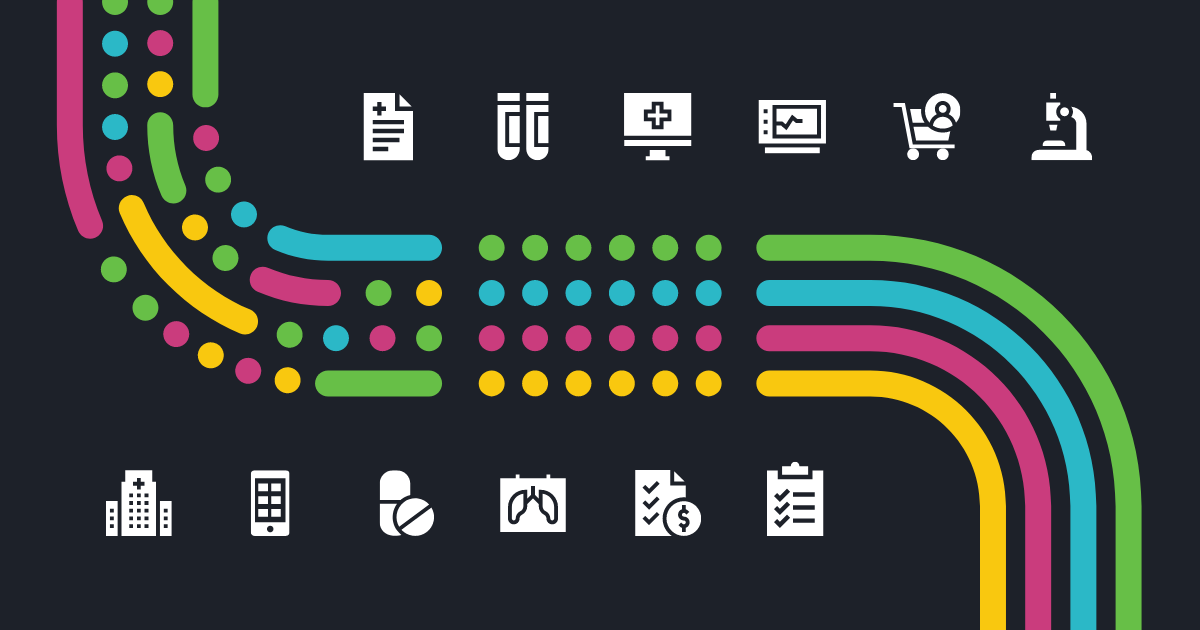The use of real-world data has been gaining traction in the healthcare and life sciences industries, particularly since the COVID-19 pandemic, but what exactly is real-world data (RWD)? According to the Food and Drug Administration (FDA), “RWD are data relating to patient health status and/or the delivery of healthcare routinely collected from a variety of sources.”
To simplify it a bit, RWD is exactly what it sounds like, data derived from the real-world interactions people have along their healthcare journey. So where does RWD come from and how can it be used by the life sciences industry?
Where does real-world data come from?
As the definition from the FDA said, RWD comes from a variety of sources, including:
- Medical and pharmacy claims - Whether a patient has commercial insurance through their employer, purchases it through an exchange, or receives Medicare or Medicaid, each time they use their insurance for a doctor’s visit, hospital stay or emergency care, or to get a prescription filled, a record of that transaction is recorded in the form of a claim. This provides a longitudinal view of the patient’s healthcare journey.
- Electronic Medical Records (EMR) - Gone are the days of endless rows of folders with colored tabs at a doctor’s office. Now, doctors bring a laptop into the room and everything is recorded in an EMR, providing robust data on a myriad of clinical attributes and observations for both insured and uninsured patients.
- Labs - Whenever blood, urine or stool samples are taken to monitor a patient’s health, those specimens are processed by a lab, which offers another source of RWD. Lab results provide objective insights that confirm diagnoses, quantify disease severity, and can even offer genomic and pathological characteristics.
- Hospital chargemaster - Hospital chargemasters are what’s used to keep an itemized list of all of the procedures and tests that occurred during a patient’s hospital visit, as well as all of the drugs and equipment utilized, including specific brand names.
- Consumer sources - There are a number of consumer RWD sources as well, such as data on purchases from the pharmacy or grocery store, from implanted devices, such as pacemakers, or from wearables, such as smartwatches or glucose monitoring devices for those with diabetes.
How can real-world data be used by life sciences?
Life sciences organizations can leverage real-world data throughout the product life cycle:
Before a clinical trial
- Inform study design - RWD can be used to inform study design, such as determining realistic endpoints, sample sizes, and inclusion and exclusion criteria for participants based on the actual healthcare journey of people with the condition being studied.
- Aid in site selection and recruitment - Using RWD, you can better pinpoint areas where a particular condition may be prevalent and discover physicians treating patients meeting your inclusion and exclusion criteria that could serve as investigators or assist in your recruiting efforts.
- Enhance enrollment screening and qualification - As patients are enrolled in a trial, RWD can be used to validate patient-reported data and gain a more comprehensive understanding of the patient’s medical history, including comorbid conditions and recent lab values, as well as provide context about the disease being studied, such as onset, trajectory and past treatments.
During the trial
- Find participants lost to followup - RWD allows researchers to continue to monitor patients that stop participating in the clinical trial to see if they have recurring diagnoses, new hospitalizations or receive other treatments.
- Conduct concurrent studies - If new questions arise during the course of a trial, whether from participants’ responses or changes in the treatment landscape, RWD allows you to rapidly respond and contextualize the study.
- Administer an external control arm - When circumstances prevent having a portion of trial participants take a placebo, RWD can be used to establish a regulatory-grade external control arm.
- Monitor participant healthcare utilization - RWD also allows researchers to monitor the healthcare that participants are receiving outside of the study.
After the trial
- Conduct post-marketing safety surveillance - Once a drug is approved, RWD allows you to continue to monitor participants to address any ongoing safety requirements.
- Administer long-term follow up and comparator studies - You can also determine the long-term outcomes and effectiveness of a product by monitoring RWD and administer comparator studies to demonstrate the value of your product compared to other treatments, providing this evidence to payers and/or regulatory agencies.
- Research vulnerable populations - Certain populations are excluded from participating in clinical trials, such as pregnant women. RWD can be used to analyze these subgroups and fill in any evidence gaps.
- Discover new indications - Using RWD, you can also determine the effectiveness of your product in treating additional indications.
Commercial initiatives
- Implement a trigger program - It is important to ensure the right patient receives the right treatment, particularly as medications become more personalized. Using RWD and advanced analytics, life sciences organizations can set up a trigger program that provides alerts identifying healthcare providers with patients who are likely to benefit from a given therapy to help target your outreach and educational efforts.
- Refine audience targeting - Similarly, synchronizing healthcare and social determinants of health data with your enterprise data can help you gain a deeper understanding of patient behavior for more precise targeting for your awareness campaigns and support programs.
- Optimize campaigns - You can also synchronize your digital media and television exposure data with RWD on patient activity to provide real-time media attribution for informed, data-driven campaign optimization.
You can see why real-world data is increasingly being utilized to enhance and optimize research, regulatory submissions, post-launch expansion and quests for new indications. If you would like to learn more about RWD sources or how you can incorporate RWD into your project, contact HealthVerity to see a demo of the nation’s largest real-world data ecosystem.






